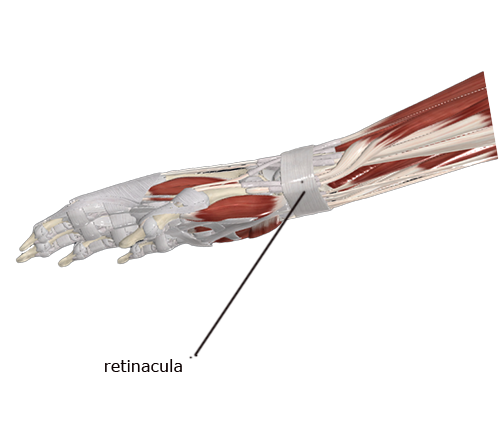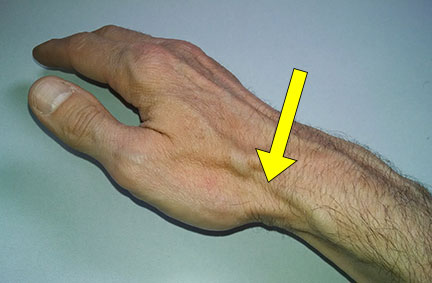Hazards of Thumb Overuse
- Whitney Lowe
Updated 01/03/2024
Introduction
Modern society requires a great deal of repetitive thumb use, especially from texting on mobile devices. A recent study investigated the frequency of text messaging among university students and found that close to half of these students were sending an average of 50 text messages per day. Many of them were experiencing thumb pain and tested positive for tendon pathology of the thumb. I was also shocked when my nephew told me he had written a paper for school on his phone. These same stresses that plague mobile device users also plague many massage therapists, because techniques often involve constant or repetitive use of the thumb.
Tenosynovitis of the Thumb
Thumb overuse often leads to a condition known as de Quervain’s tenosynovitis, which varies from being slightly bothersome to severely impairing work capabilities. If not properly addressed, this chronic overuse disorder can cause many massage therapists to abandon their careers because of occupational injuries. Gaining insight into the development of this condition is crucial for devising effective strategies to identify and resolve it successfully.
The muscles controlling the hand and fingers primarily reside in the forearm, with long tendons extending into the hand and fingers. These tendons span several joints and need to be flexible enough to navigate the complex movements of these joints.
The effectiveness of these tendons relies heavily on their close association with the joints they traverse. This close binding is achieved through connective tissue structures called retinacula, as illustrated in Image 1 below. To minimize friction between the tendon and the retinacula, the tendons in the hands and fingers are encased in synovial sheaths. Smooth, pain-free movement is possible only when the tendon can glide effortlessly within these synovial sheaths.

Thumb tendons under the retinaculum
Repetitive movements or excessive stress on a tendon can lead to fibrous adhesions or inflammation between the tendon and its surrounding sheath, a condition known as tenosynovitis. The abductor pollicis longus and extensor pollicis brevis, two key thumb muscles, are often affected by this condition. Fritz de Quervain first described the involvement of these tendons, hence the condition’s name.
The frequent use of these tendons in operating small mobile devices has led to the common terms “Blackberry thumb” or “gamer’s thumb” for this condition. Massage therapists are particularly prone to it due to the repetitive and strenuous use of the thumb in various massage techniques. The pain associated with tenosynovitis is typically felt at the thumb’s base. It can be easily identified by pressing on the involved tendons near the styloid process of the radius (see image below).

The Finklestein test is another method that is often used to identify this problem. In this test, the thumb is placed across the palm, the fingers are wrapped over the thumb, and the hand is then moved in ulnar deviation. Pain near the thumb’s base during this movement often indicates tendon dysfunction, as seen in tenosynovitis.
Orthopedic Medical Massage Treatment for Tenosynovitis
De Quervain’s tenosynovitis is most effectively treated by attempting to reduce fibrous adhesions between the tendon and its surrounding synovial sheath. Deep friction of the affected tendons is particularly helpful for achieving that goal. The friction treatments are most effective if they are performed while the tendon is on stretch so that it is pulled taut. It is also helpful to treat the bellies of the abductor pollicis longus and extensor pollicis brevis muscles so chronic hypertonicity in these muscles does not apply further tensile overload to the tendon.
Constant text messaging has become such an integral part of many people’s lives. If you have clients who are showing symptoms of de Quervain’s tenosynovitis, you cannot only help them with massage, but teach them how to perform self-treatment at home regularly to reduce the cumulative stress that can further aggravate the condition. Similarly, it is very beneficial to perform self-massage of these affected tendons on your own wrist and hand to prevent the condition from developing into a career-shortening injury. Another important factor is to make sure you aren’t using techniques that overuse your thumbs. The thumb is very effective for so many techniques, but you can also achieve similar effects with pressure tools or other treatment strategies.
Come join us to learn more about this condition and a variety of other forearm and hand conditions in our course: Orthopedic Massage for the Elbow, Forearm, and Hand.

